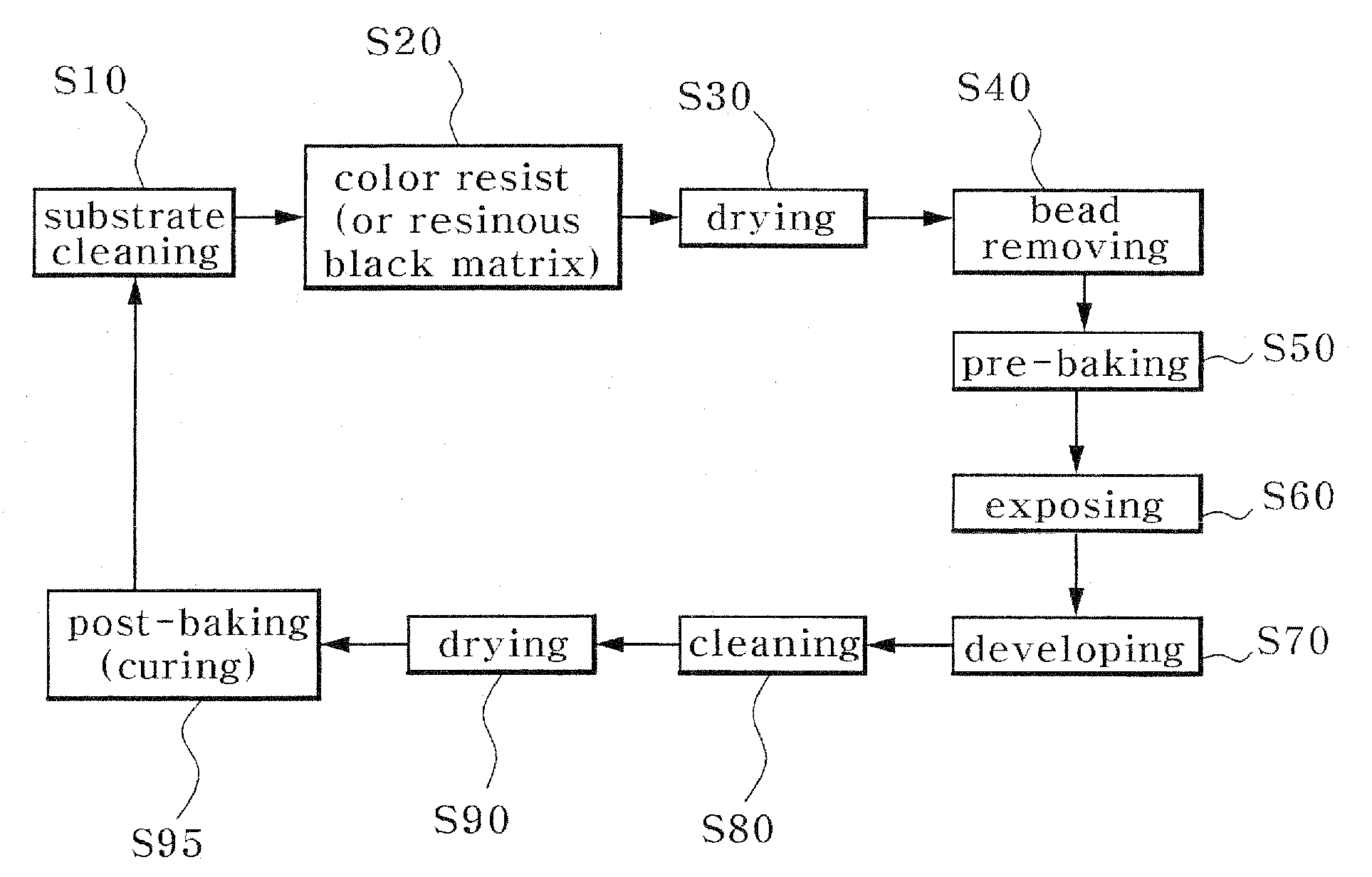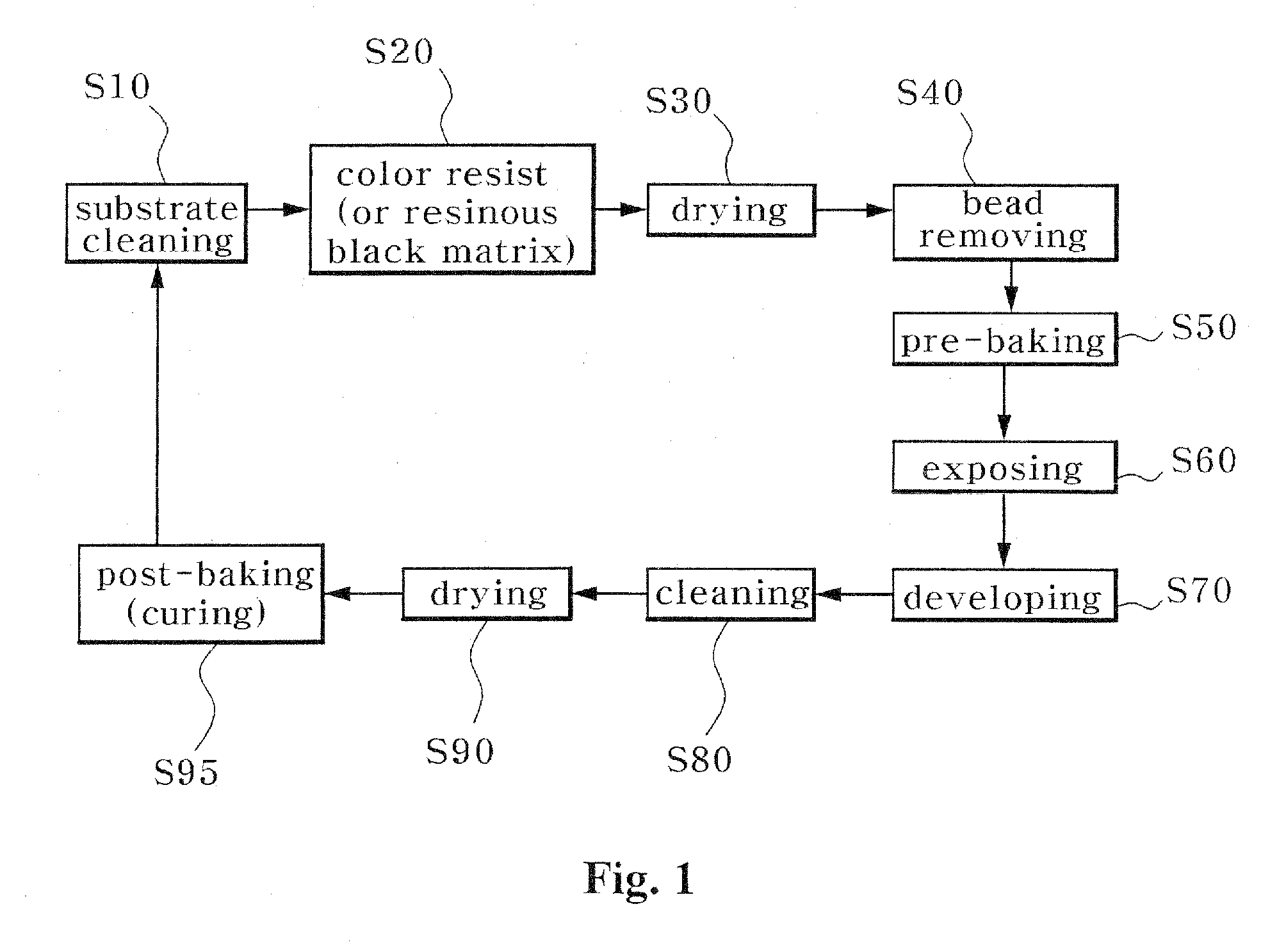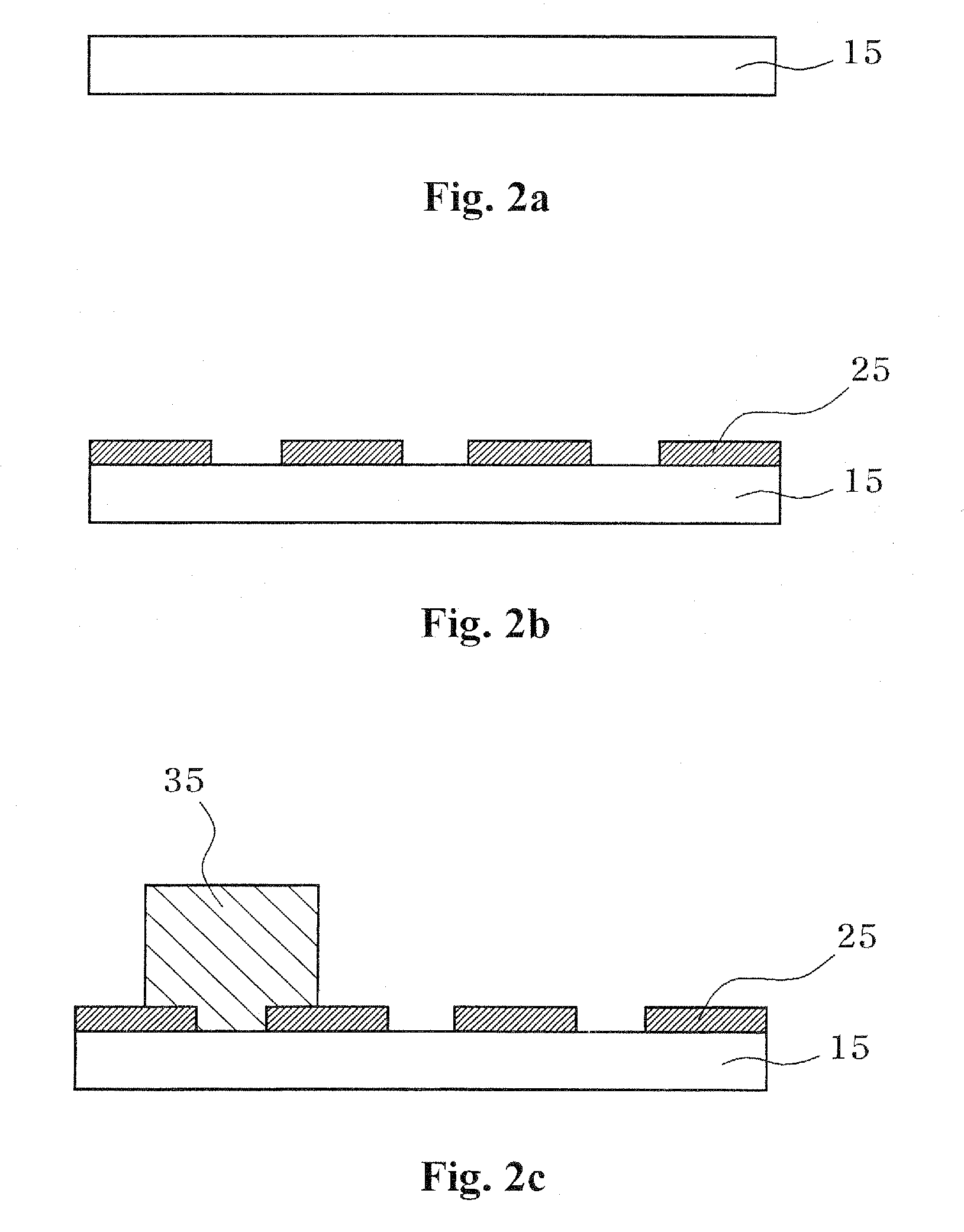Method of Curing Color Filter for Electronic Display Using Electron-Beam and Method of Fabricating Color Filter for Electronic Display Using the Same
- Summary
- Abstract
- Description
- Claims
- Application Information
AI Technical Summary
Benefits of technology
Problems solved by technology
Method used
Image
Examples
example 1
Curing by Electron Beam Irradiation to a Color Filter Sample on a Glass Substrate
[0111](1) Step 1 in Example 1: Coating and Drying a Color Filter on the Glass Substrate
[0112]As in a typical method of fabricating a color filter, a resist for forming a red color filter provided as a color filter sample was coated to a thickness of 1.5 μm and dried on a glass substrate (Corning 1730, 0.7 mm in thickness).
[0113]FIG. 12 is an SEM image of the color filter sample coated to a thickness of 1.5 μm in this example.
[0114]Next, Fourier transform infrared spectroscopy (FT-IR) was used for analysis before irradiation of an electron beam.
[0115]FIGS. 13 and 14 are graphs depicting FT-IR analysis results on color filter resist samples of Dongwoo Fine-Chemicals Co. Ltd., Korea, and JSR Co. Ltd., Japan.
[0116]Herein, since the color filter resists of Dongwoo Fine-Chemicals Co. Ltd., Korea and JSR Co. Ltd, Japan are representative color filters in the art, they were adopted and compared. Hence, if all o...
example 2
Electron Beam Irradiation From the Rear Side of the Glass Substrate
[0130]An electron beam having a curing energy of 1 MeV was irradiated at a total irradiation amount of 100 kGy to the color filter samples prepared as in Example 1 from the rear side of the glass substrate to adjust the energy of the electron beam as shown in FIG. 11.
[0131]FIG. 16 is a graph depicting an FT-IR analysis result on color filter sample TR-PI when the electron beam was irradiated from the rear side of the glass substrate.
[0132]In FIG. 16, absorption peaks of the acrylate cross-linkable monomer, 807 cm−1 and 1405 cm−1, are not substantially observed.
example 3
Electron Beam Curing of Color Filters Coated on a Glass Substrate (Effect Dependent on Irradiation Amount of Electron Beam)
[0141]With color filter samples coated on the glass substrate under the same conditions as Example 1, a total irradiation amount of electron beam was varied from 20 to 50, 150 and 200 kGy in order to obtain an effective irradiation amount for polymerization. After irradiation of the electron beam, the polymerization degrees of the color filter samples were analyzed based on FT-IR.
[0142]FIG. 19 is a graph depicting an FT-IR analysis result on curing degrees of color filter samples after irradiating an electron-beam according to a condition of Example 3.
[0143]Referring to FIG. 19, it can be seen that the most effective condition for polymerization of the color filter was obtained at about 50˜100 kGy (T3-PI-20, T3-PI-50), and that the polymerization degree was not significantly increased at 100 kGy or more (T3-PI-150, T3-PI-200). For color filter sample T3-PI-20 at...
PUM
 Login to View More
Login to View More Abstract
Description
Claims
Application Information
 Login to View More
Login to View More - R&D
- Intellectual Property
- Life Sciences
- Materials
- Tech Scout
- Unparalleled Data Quality
- Higher Quality Content
- 60% Fewer Hallucinations
Browse by: Latest US Patents, China's latest patents, Technical Efficacy Thesaurus, Application Domain, Technology Topic, Popular Technical Reports.
© 2025 PatSnap. All rights reserved.Legal|Privacy policy|Modern Slavery Act Transparency Statement|Sitemap|About US| Contact US: help@patsnap.com



